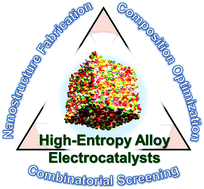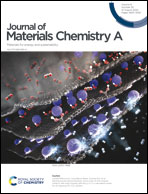High entropy alloy electrocatalysts: a critical assessment of fabrication and performance
Abstract
High entropy alloy nanoparticles (HEA NPs) have gained considerable interest as electrocatalysts toward fuel cells and water electrolysis due to their remarkable durability and catalytic activity. The unique properties of HEA-based electrocatalysts may arise from the synergy of the mixed elements in a single-phase solid solution. Unfortunately, the details regarding the active catalytic sites and intrinsic activity of such catalysts are still very vague since the focused investigation on the properties of HEA NPs has only started recently. In this report, the progress of development of HEA NPs is critically reviewed to determine the extent of potential of HEA-based electrocatalysts. Herein, we present the proposed thermodynamic models that guide the design of HEA single-phase solid solution, followed by the discussion of different synthetic strategies to fabricate HEA NPs. Computational studies and machine-learning assisted tools are also presented to find the optimum catalyst composition and structure of HEA NPs, which is necessary to further improve the catalytic performance of HEA-based electrocatalysts and to gauge the relevance of structural factors such as strain effects, adsorption energies, and the interparticle distance to the catalytic performance. We conclude this report by drawing attention to future research directions on HEA NPs.

- This article is part of the themed collection: Editor’s Choice: Machine Learning for Materials Innovation


 Please wait while we load your content...
Please wait while we load your content...